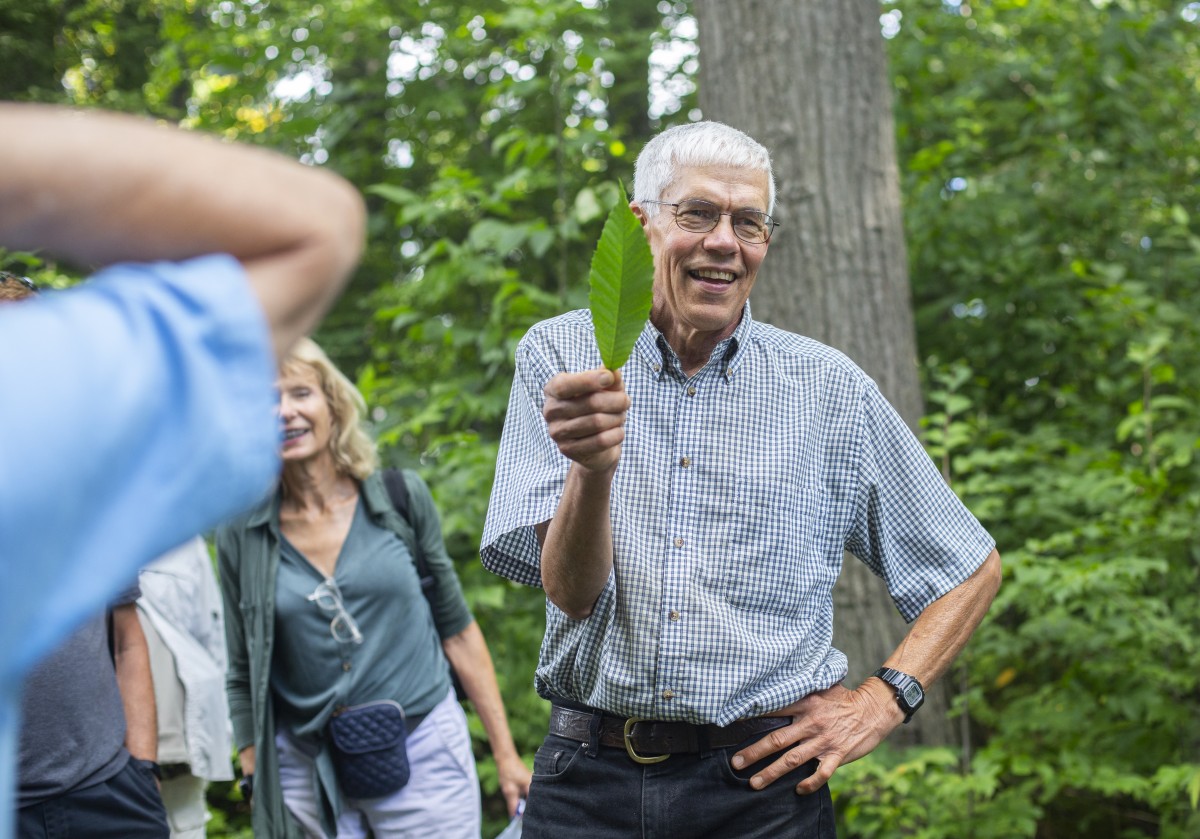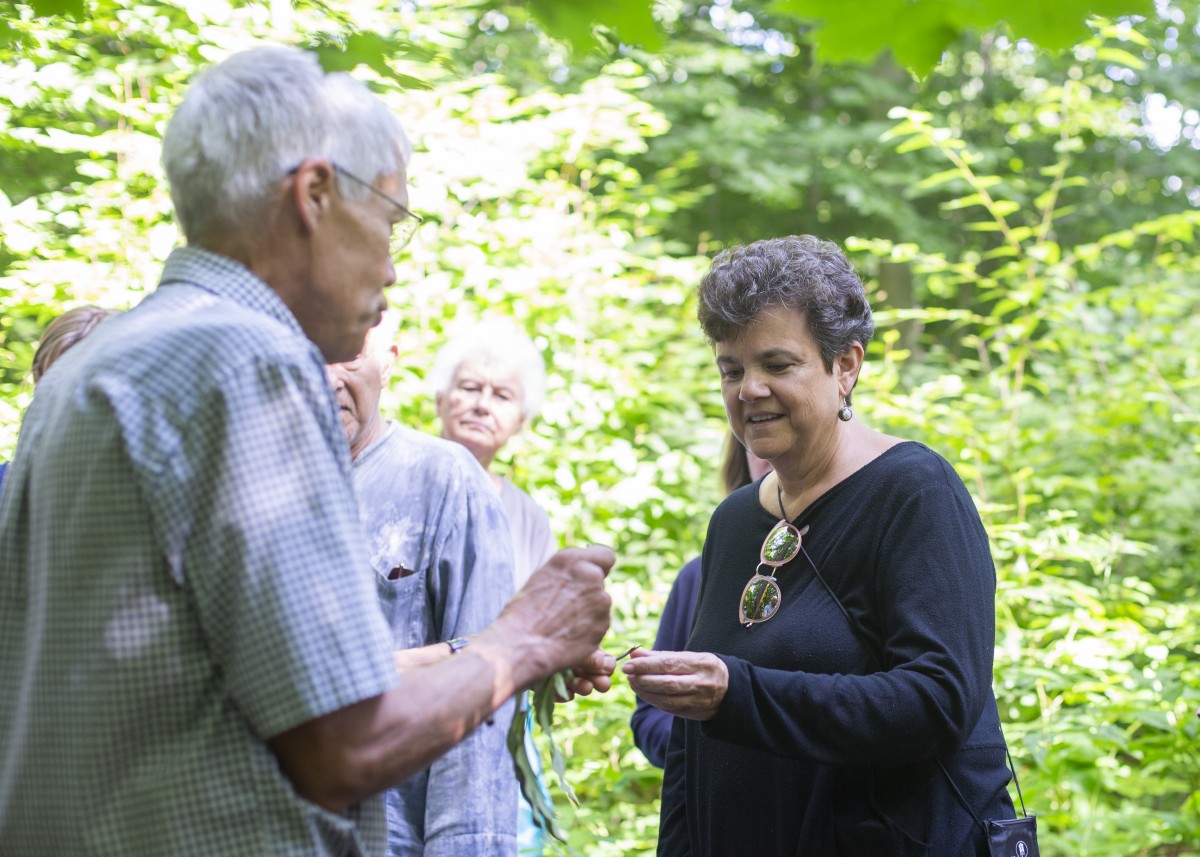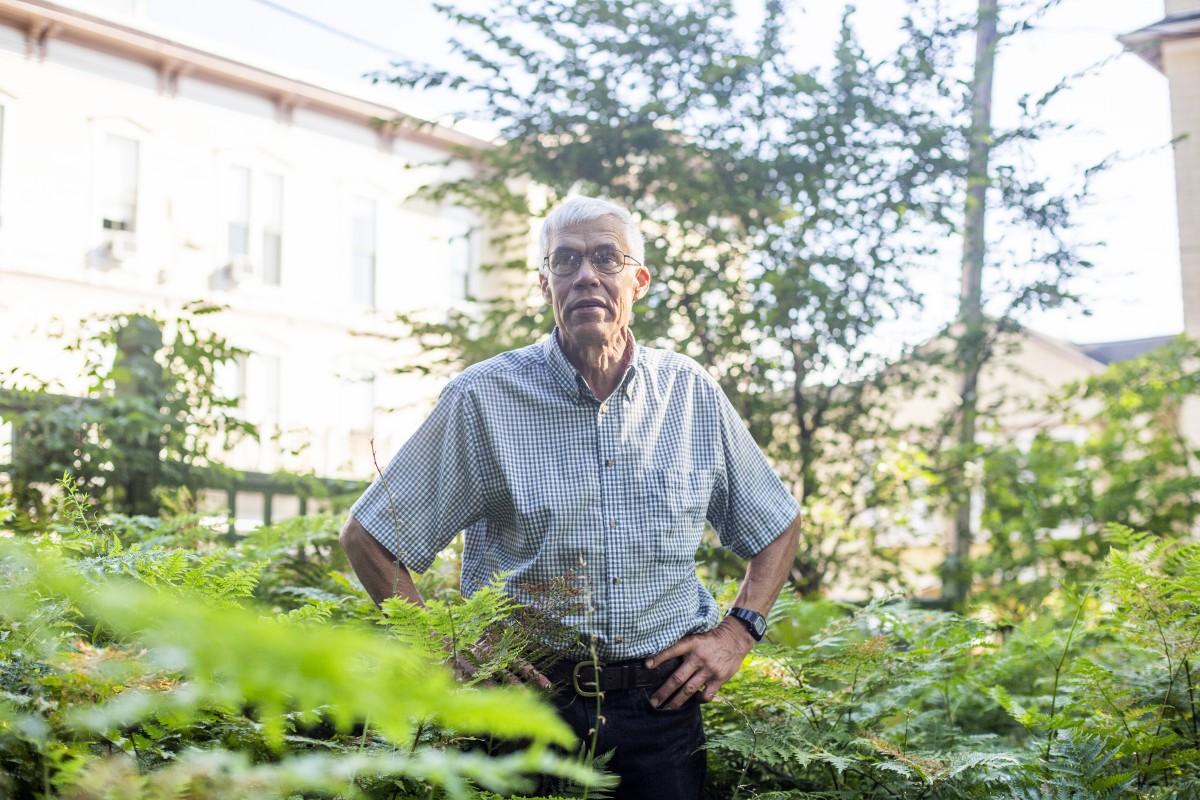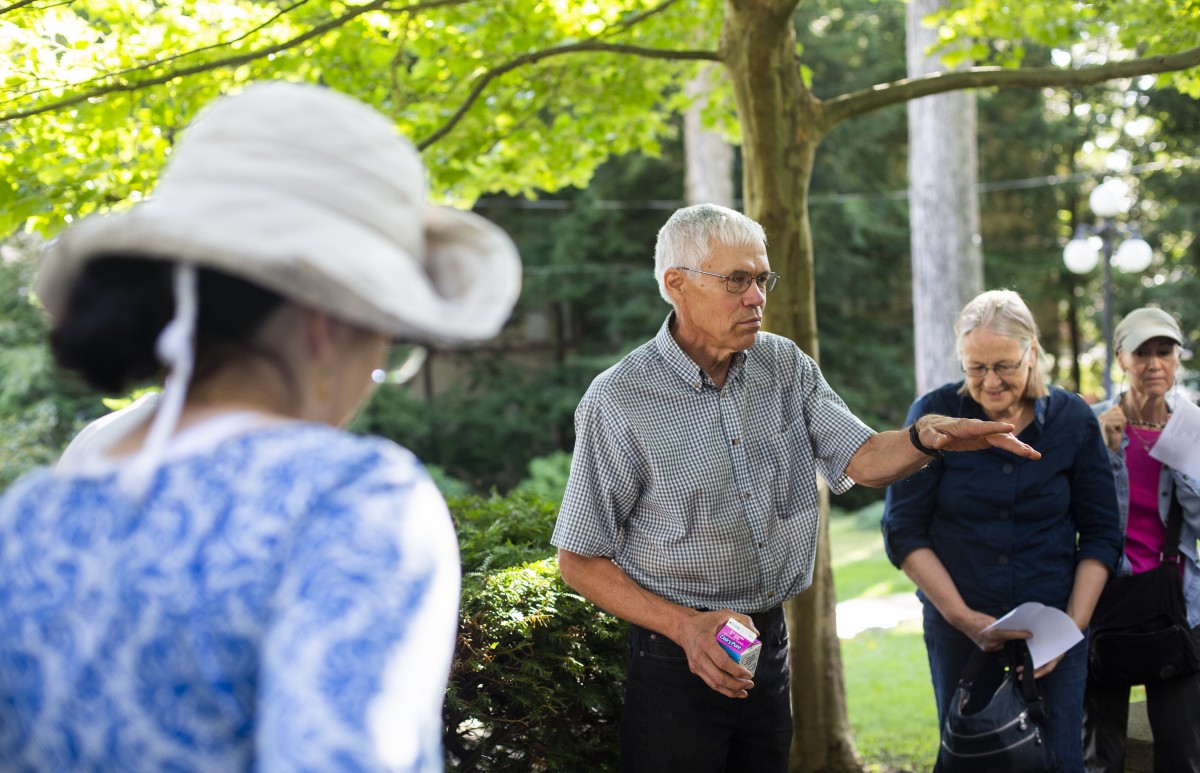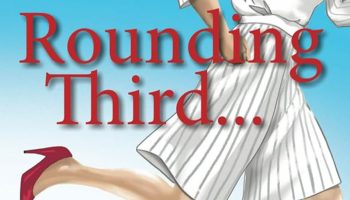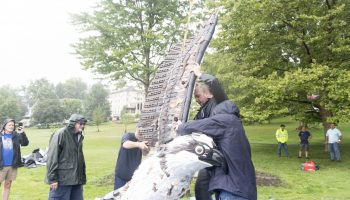Jack Gulvin walked up to a staghorn sumac shrub on Massey Avenue and took a bite out of the berries growing in a cluster shaped like a red, pointy pine cone.
“No flavor,” Gulvin said. “They’ve been rained on.”
Gulvin raved about the plant in front of his audience of about 30 people who had been following him around Chautauqua’s grounds for the past hour last Friday morning.
“This is my favorite tree of all the tree species,” he said. “There’s no plant that gets more colorful in the fall than staghorn sumac.”
The plant performs a number of important ecological functions too, he said, like serving as a source of nectar for honeybees, and creating seeds that birds eat in the late winter when they return from southern migrations.
Gulvin leads Bird, Tree & Garden Club Nature Walks at 9 a.m. every Friday during Chautauqua’s summer season. The tour departs from the back side of Smith Wilkes Hall and continues along Fletcher Avenue, through the South Ravine and down Massey Avenue. On his tours, Gulvin points out the many delightful secrets that nature hides in plain sight. He started last week’s tour by pointing out liverwort, a plant that can be found in wet areas, like the cracks between the paving stones of the patio behind Smith Wilkes.
“It has no true stem, no seeds, no true roots,” Gulvin said. “About all it consists of is a little flat leafy structure with some lobes on it that resembled a liver to someone a long time ago.”
One of the ways liverwort reproduces is by creating cups with tiny green eggs on the leaves.
“When a raindrop hits a cup, the little green eggs will splash out and land nearby somewhere and start to produce a new leafy structure,” he said.
Gulvin revealed a sample of liverwort he had gathered from under the bleachers at Mayville Lakeside Park. He passed it around so people could see the tiny cups on the leaves. Later, he showed a large plant leaf that had holes in it, which he said were created by leafcutter bees. They cut out oval leaf bits to create tubes where they can store their eggs. They also cut circular bits of leaves to use as dividers between each egg in the tubes.
“It gathers a lot of pollen, packs the tube full of pollen, puts in an egg and then puts in a divider before it starts its next brood cell,” Gulvin said. “If you look at this leaf here, you’ll see it’s a perfect little circle about the diameter of a pencil; very, very precise work by these leafcutter bees.”
Next, Gulvin showed the crowd a leaf from a red oak tree near the Hall of Philosophy. It had a brownish orb about the size of a ping pong ball hanging from it. The structure, known as a gall, is used by cynipid wasps to raise and hatch their young. The wasps lay their eggs on the underside of a new leaf in the spring; the eggs contain chemicals that cause the tree to create the gall on its leaf.
“The wasp egg hatches, the larva lives and feeds inside, and eventually turns into an adult wasp, and will exit,” Gulvin said. “Typically on these things, you’ll find a round exit hole as well.”
As it turns out, staghorn sumac is not the only edible plant on the grounds. There are also daylilies, which produce colorful flowers that are only in bloom for a day. In East Asia, people prepare all parts of the plant. At Chautauqua, if one is careful not to get caught, they can pluck a flower to sample its petals.
The general consensus was that yellow daylilies taste better than the orange ones.


